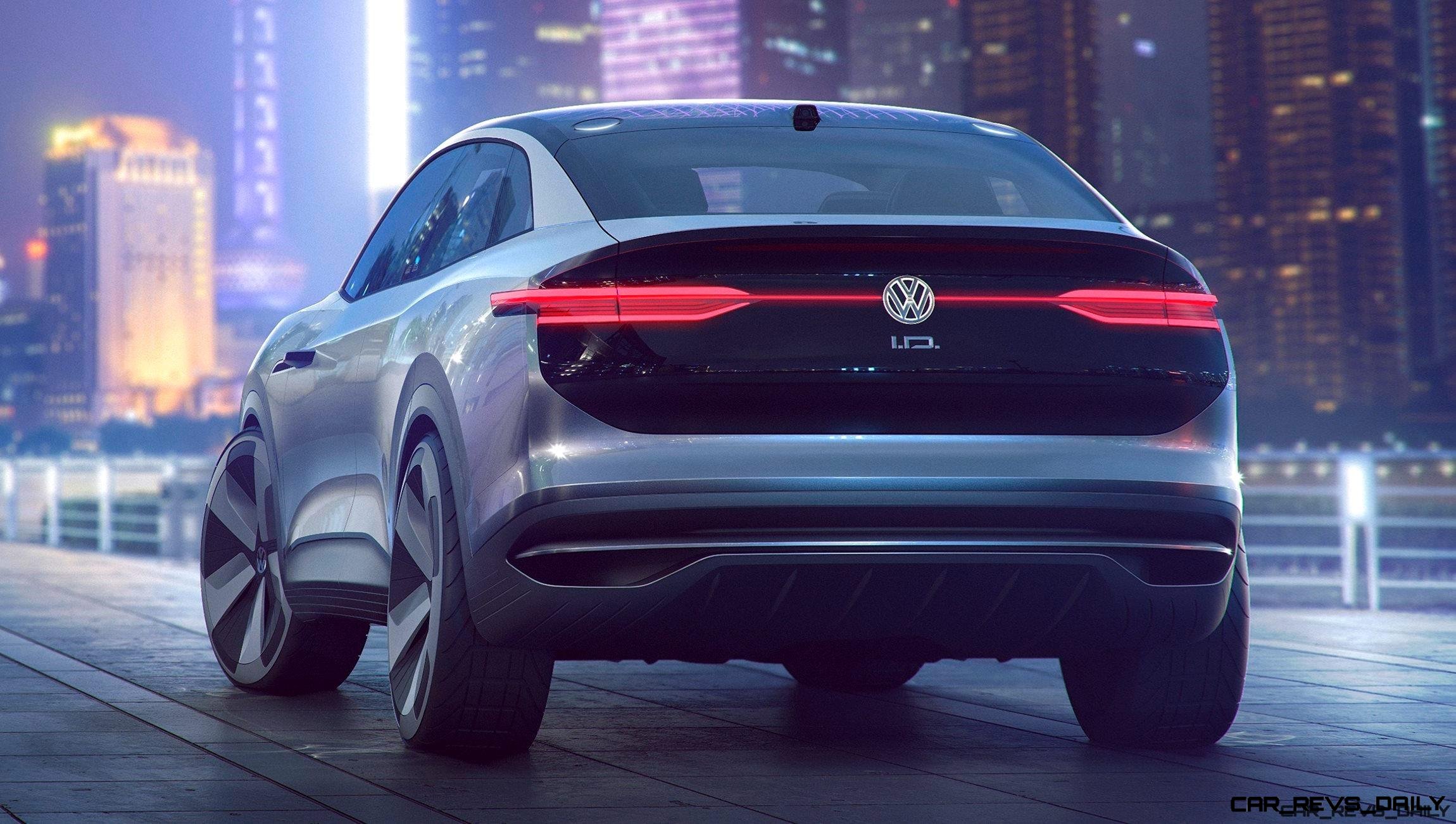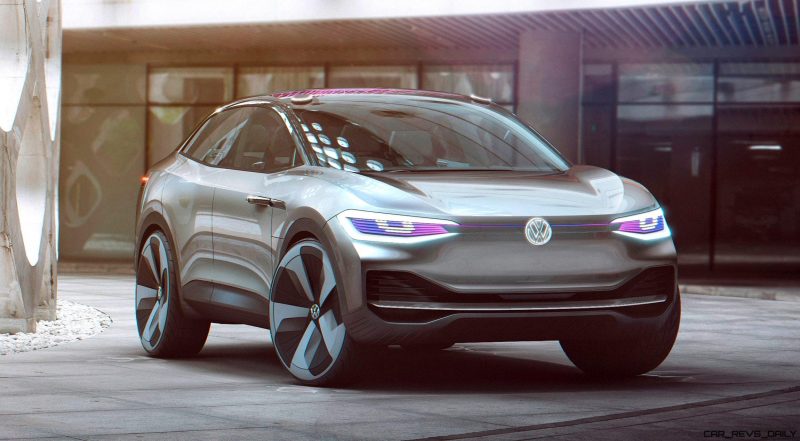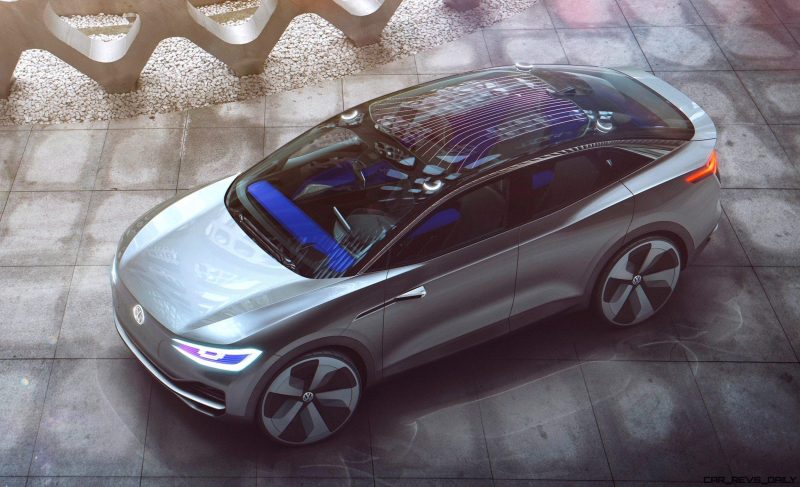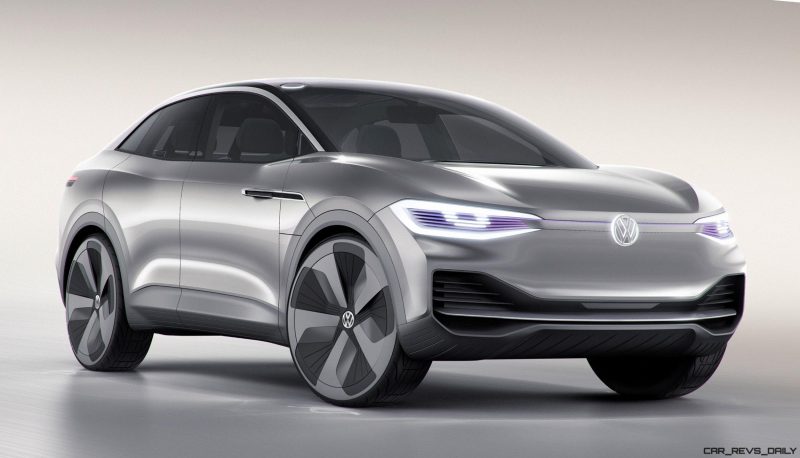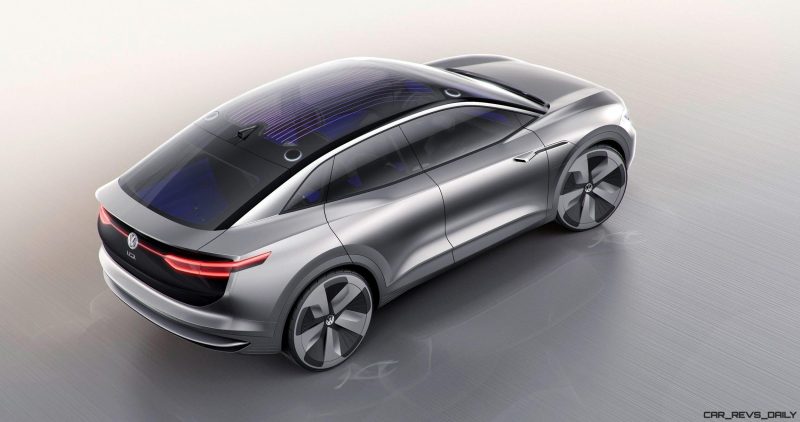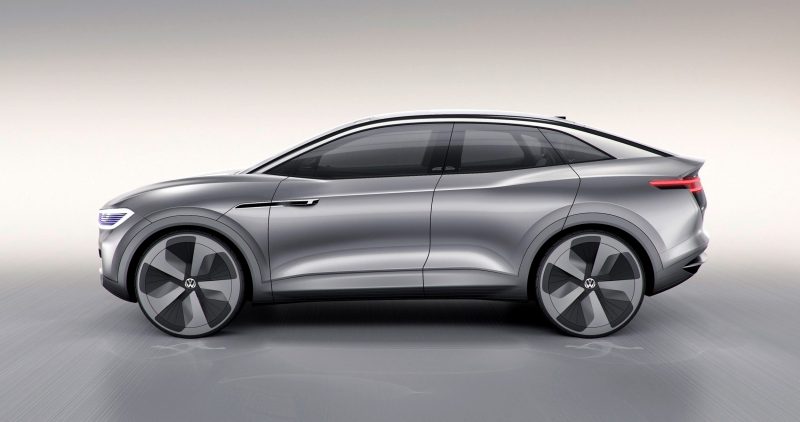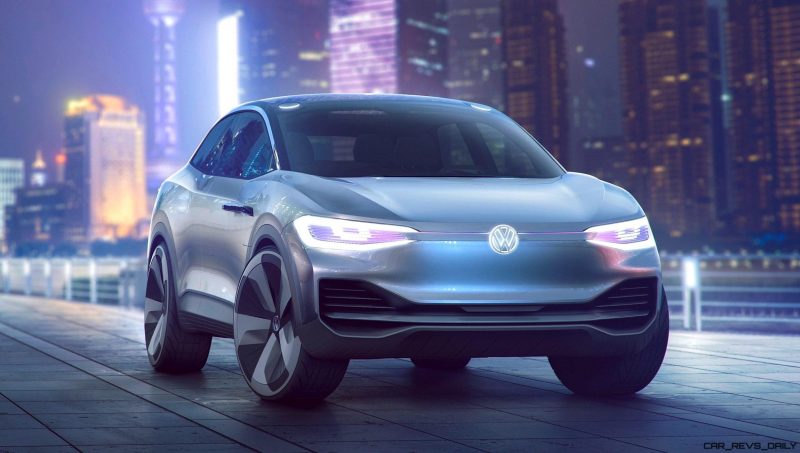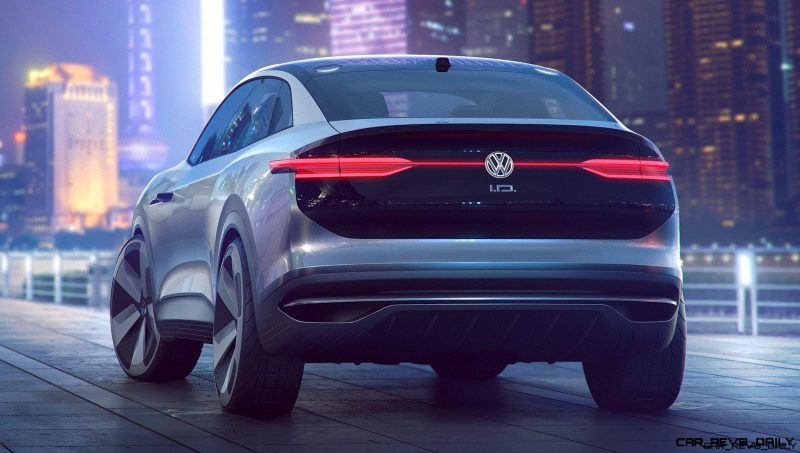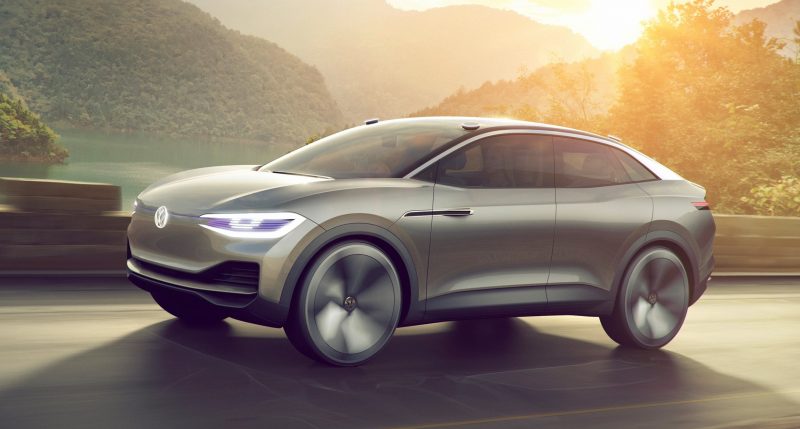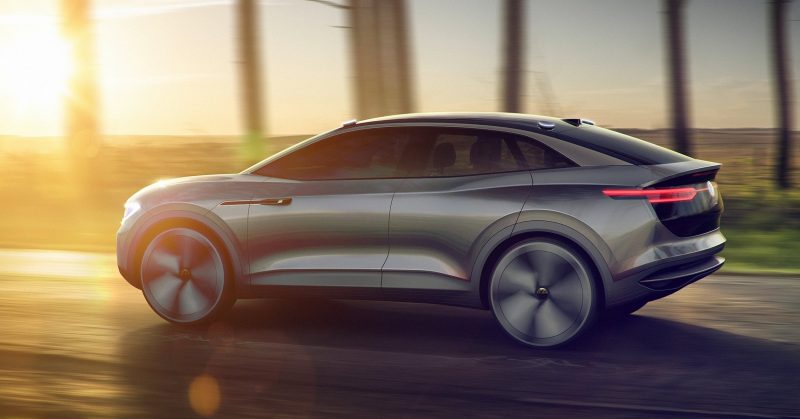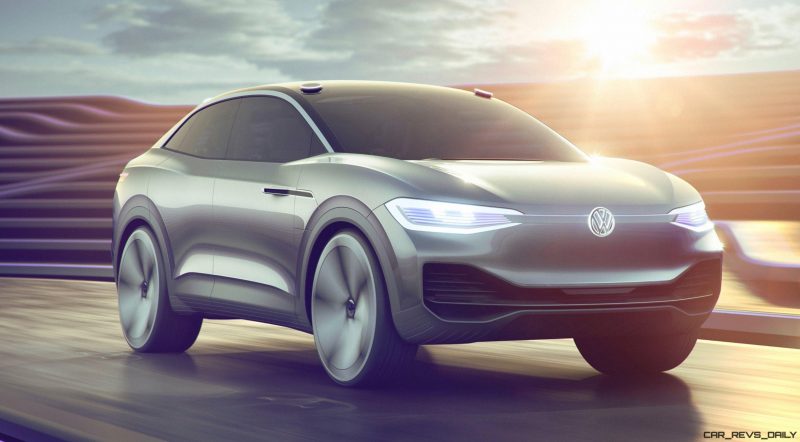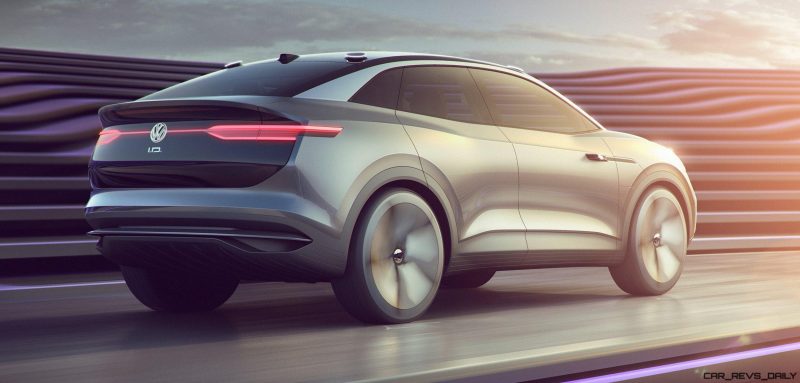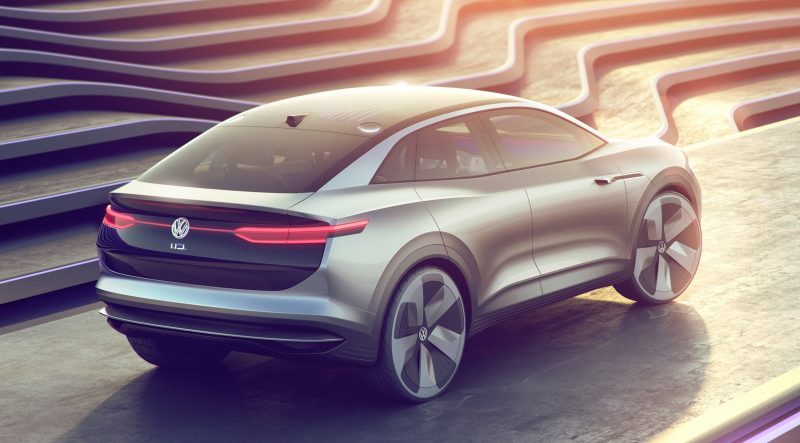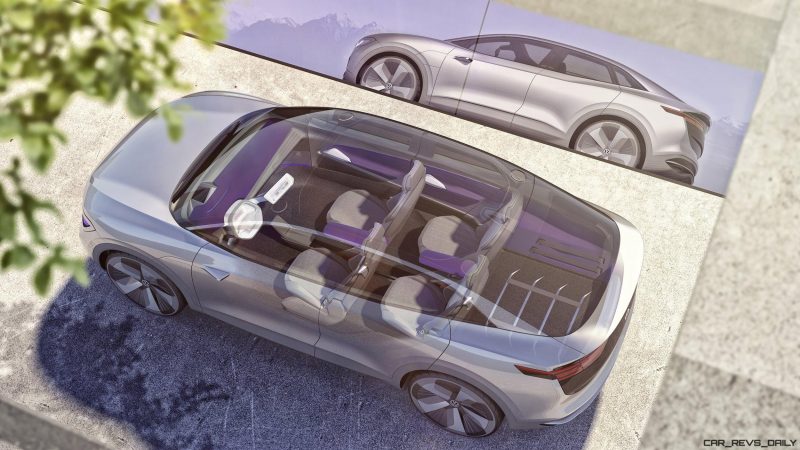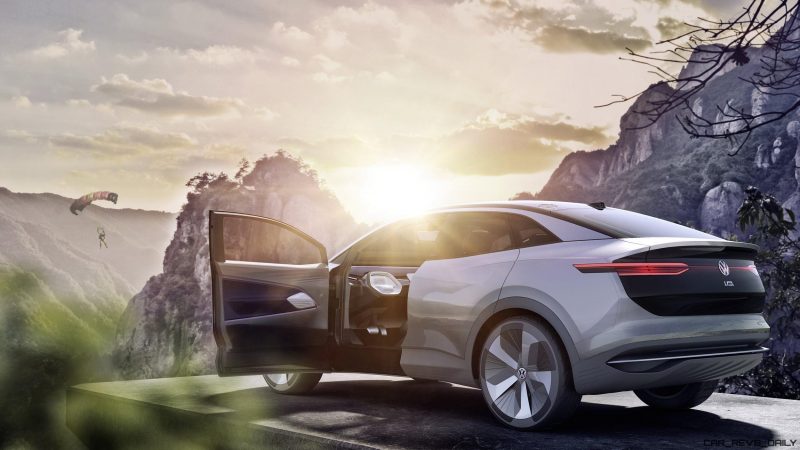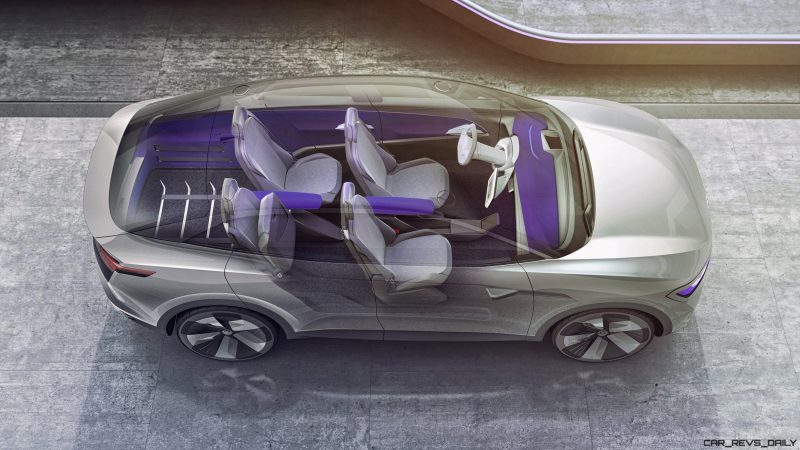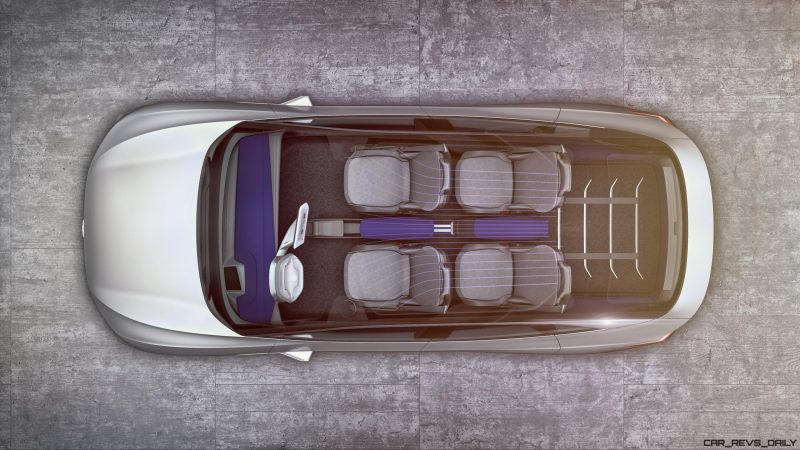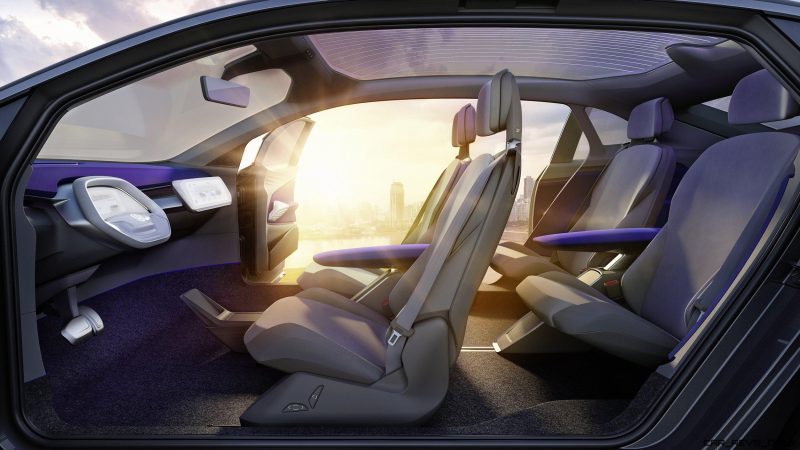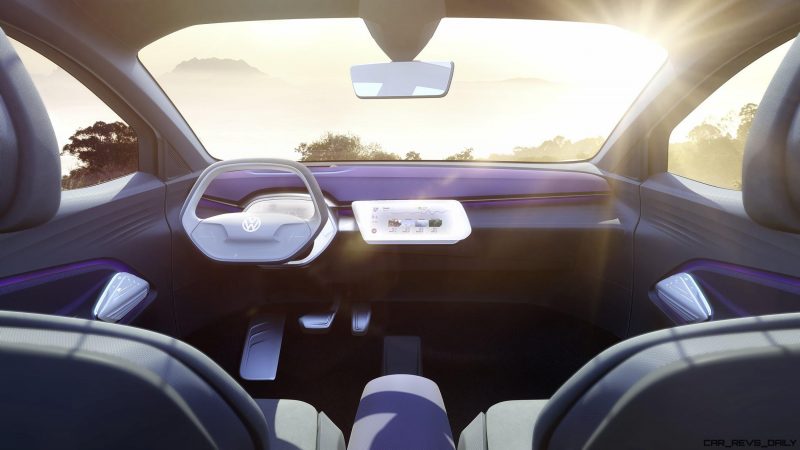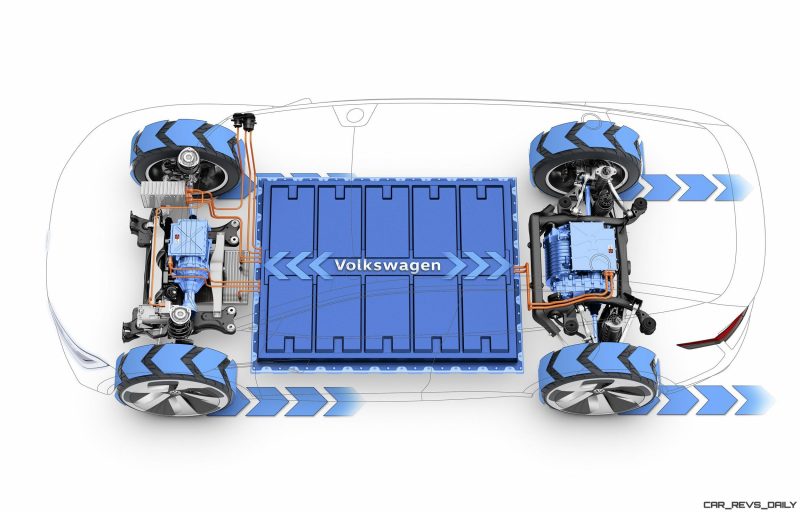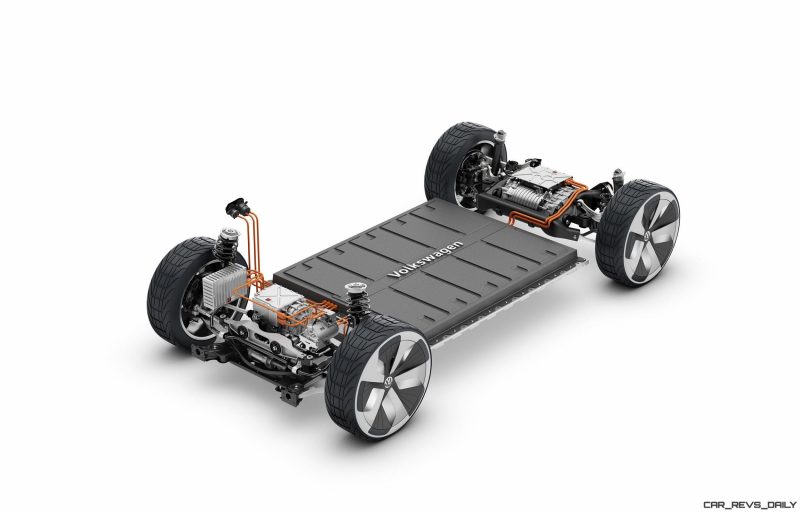The tsunami of EV crossovers in development from all brands is starting to worry us. Where will demand for these E-SUVs (trademark!:) come from when these all arrive together in late 2018?!
Automakers near and far are sure that these vehicles are the way forward. Expensive vehicles as a way to offset the giant costs of the battery packs needed for 300 miles. The same size batteries would be needed for a compact size car, but who would buy that? As such, EV crossovers do make some sense, and will let carmakers in the US keep selling a load of guzzlers and still make CAFE targets.
The VW ID Crozz has a silly name but a serious mission. A combo of the ID and Buzz concepts from recent shows, the Crozz is a goofy look at an electric SUV about the size of Tiguan.
Crozz, unfortunately, has a silly style too. It looks so cartoonish, with embellished details like oversized LEDs and tires. The panelwork/surfacing has a puffy feel that is very un-sexy. Cross also feels like a joke from up front, [articularly versus the very, very stern LED face of the new Passat or Atlas.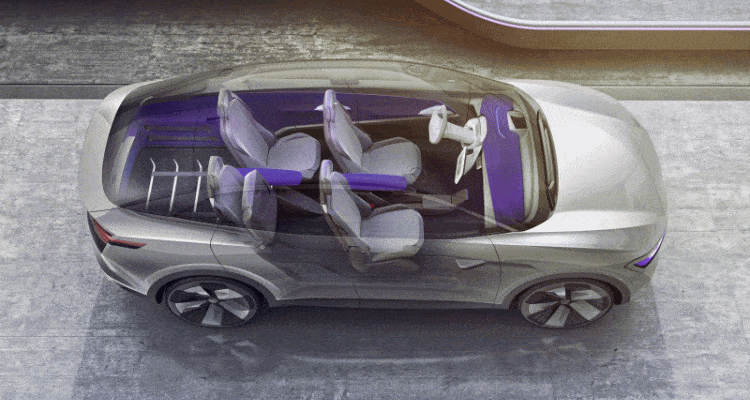
The cabin is pretty roomy with the flat floor, tall roofline and low-slung dash design. The seats actually float above the floor and can tuck upward for even more cargo space. And what is this!?
An autopilot drive mode tucks the steering wheel away in the dashboard like a turtle’s head.
Crozz-tastic!
Perhaps a bit of design levity from VW is timely. The future of VW is promising – even without the big grin of the Crozz concept.
2017 VW ID Crozz Concept
VOLKSWAGEN DEBUTS I.D. CROZZ CROSSOVER CONCEPT AT “AUTO SHANGHAI 2017”
Apr 18, 2017
The third concept based off the new MEB electric vehicle architecture is a spacious crossover utility vehicle
- The I.D. CROZZ is a key pillar of the new I.D. family based on the Modular Electric Drive Matrix (MEB)
- The I.D. CROZZ delivers 302 horsepower, has a top speed of 112 mph and has a range of 311 miles on the New European Driving Cycle.
- The battery of the I.D. CROZZ can be charged to 80 percent in just 30 minutes (with a 150 kW DC fast charger).
- The I.D. CROZZ provides a similar amount of interior space as the all-new 2018 Tiguan
- Cockpit has augmented reality head-up display, Active Info Display, infotainment tablet and door panel controls
- In ‘I.D. Pilot’ mode the I.D. CROZZ drives autonomously
Wolfsburg/Shanghai, April 2017. Volkswagen is developing a new fleet of electric vehicles that will start full production in 2020. At the ‘Auto Shanghai 2017’ international show, Volkswagen will reveal the I.D. CROZZ, its first electrically powered crossover utility vehicle (CUV)—a four-door coupe and sport utility vehicle (SUV) in one. Following the headline-grabbing world debuts of the I.D. in Paris in 2016 and I.D. BUZZ in Detroit in 2017, this is the third version of the I.D. family. It is also a zero-emissions vehicle with a very long range, charismatic design and a completely new interior concept. The I.D. CROZZ now underlines just how diverse the range of future Volkswagen electric models is going to be.
The I.D. CROZZ is a sporty, zero-emission all-rounder—with electric all-wheel drive—that is equally impressive in the urban jungle as it is on rough terrain. The I.D. CROZZ has 302 horsepower, a top speed of 112 mph and can cover up to 311 miles (NEDC) on one battery charge. Using a 150 kW (DC) fast charger, the high-performance battery can be 80 percent recharged within 30 minutes.
The I.D. CROZZ is more compact and has a lower roofline than the all-new 2018 Tiguan, yet the CUV provides just as much space. The key to this is the car’s design: like the I.D. and I.D. BUZZ, the I.D. CROZZ is also based on the newly conceived Modular Electric Drive Matrix (MEB). The MEB models have a very long wheelbase, with compact powertrain components and a battery that lives under the floor. The interior space is generously proportioned and provides a true ‘Open Space’.
DESIGN
The MEB’s dynamic proportions provide an ideal platform for a carefully considered electric mobility design DNA. Klaus Bischoff, Head of Design for the Volkswagen Brand, explains: “If it was ever possible to make a one-hundred percent certain prediction of what the future will look like, here it is. In 2017, we are showing how Volkswagen will be transforming the roadscape from 2020. For us, the three prototypes of this new generation of zero-emission vehicles—I.D., I.D. BUZZ and I.D. CROZZ—mark the start of a design and technology revolution that is going to change individual mobility and the Volkswagen brand forever.”
Volkswagen’s aim is to transfer electric drive systems from start-up niche to high-volume full production by the middle of the next decade. Herbert Diess, Chairman of the Board of Management, Volkswagen Brand says: “By 2025, we want to have sales of pure electric vehicles up to one million units a year. The I.D. CROZZ will play a key role in that. Production will start in 2020.”
The clear and powerful design of the I.D. CROZZ combines the rugged look of an SUV with the elegance of a coupe. Pronounced fenders and strongly contoured wheelarches frame a silhouette that’s similar to a sports car’s. The hood, meanwhile, is sharp cut and muscular. On top of this base is a roof that makes the car appear agile even when stationary. A fine stripe in the car’s body color borders the roof on each side. The solid roof supports, meanwhile, remain almost invisible.
Another defining design feature is the D-pillar, which tapers way back and, on the inside, meets the broad shoulder section rising gently towards the rear. The designers gave the side windows a low, elongated look; the imaginary B-pillar (formed from the door frames) and C-pillar are behind glass and effectively invisible.
If you were to take a camera drone on a 360-degree flight around the concept car, you would notice two further lines that further shape the overall design. Both lines give the I.D. CROZZ a look of great strength and also visually reduce its height. The first of these lines starts at the top edge of the hood, shooting left and right into the fenders, forming a powerful arc over the wheelarches. Near the A-pillars, the line merges into the window, and climbs towards the rear before finally encircling the rear window.
From this bird’s eye view, the second line appears much later on the side of the front fenders. It develops above the fender-mounted cameras as a sharply drawn character line. In the center of the back doors it climbs, thus forming the outer border of the powerfully shaped shoulder section.
Volkswagen’s signature electric mobility lighting is integrated into the front section, with an illuminated VW badge mounted centrally between hood and bumper. It joins up to the left and right with the interactive LED headlights via a fine, striking line of light.
A new feature is a movable light blind in the illuminated panoramic roof that creates ambient lighting both inside and on the exterior. The stylish rear and broad shoulder section look powerful, while the width of the car is also emphasized by a gloss black area across the rear section with thin LED matrix taillights and an illuminated VW badge.
With the countdown to the launch of the new zero-emissions fleet in 2020, Volkswagen is heralding in a new era in more than just an engineering sense. Volkswagen Head Designer Klaus Bischoff and his team are developing a new, expressive and unique fleet of electric mobility vehicles. Klaus Bischoff: “It is a design that shows great clarity and remains absolutely self-explanatory; a design that unifies form and function in breathtaking fashion; a design that naturally integrates our century’s digitalized world.”

Tom Burkart is the founder and managing editor of Car-Revs-Daily.com, an innovative and rapidly-expanding automotive news magazine.
He holds a Journalism JBA degree from the University of Wisconsin – Madison. Tom currently resides in Charleston, South Carolina with his two amazing dogs, Drake and Tank.
Mr. Burkart is available for all questions and concerns by email Tom(at)car-revs-daily.com.

